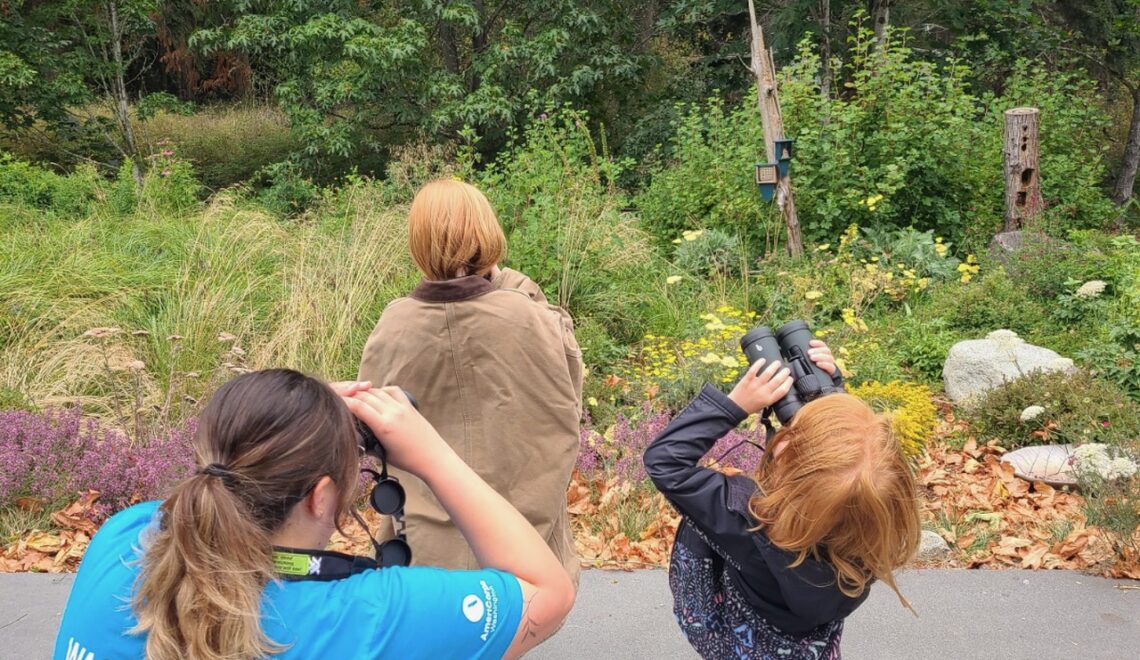
Project FeederWatch at the River Center
By Doris Causey
Project FeederWatch is a community science project with Cornell Lab of Ornithology.
All across North America, people are recording the birds seen in backyards, nature centers, community areas, and more! When thousands of FeederWatchers count birds and send their tallies to the FeederWatch database, the result is a treasure trove of numbers, which scientists analyze to draw a picture of winter bird abundance and distribution.
At the Nature Center, we began counting birds at our feeders in November of 2022. The data collected from ’22-’23 and ’23-’24 seasons indicate that 28 species of birds have visited the feeders. The largest number seen at one time were Dark-eyed Junco (20), Pine Siskins (12), and Bushtits (12).
The count varies throughout the day, the day of the week and depends on the weather.
The most exciting moment was the arrival of a male Pileated Woodpecker. He landed on the tall stump and fed on the suet. His bright red color and size were amazing. Normally we see the smaller Downey or Hairy Woodpeckers at the suet feeders. Sometimes they use the seed feeders.
Observing the behavior and antics of the birds is enjoyable and humorous, especially when a Douglas Squirrel decides to inhabit one of the feeders. A Chestnut-backed Chickadee can be quite possessive when a squirrel tries to occupy its food source.

Species seen during the count were:
- American Goldfinch
- American Robin
- Anna’s Hummingbird
- Black-capped Chickadee
- Brown Creeper
- Bushtits
- California Quail
- Chestnut-backed Chickadee
- Dark-eyed Junco
- Downey Woodpecker
- Fox Sparrow
- Golden-crowned Sparrow
- Hairy Woodpecker
- House Finch
- Pileated Woodpecker
- Pine Siskin
- Purple Finch
- Red-breasted Nuthatch
- Rufous Hummingbird
- Song Sparrow
- Spotted Towhee
- Steller’s Jay
- Townsend’s Warbler
- Varied Thrush
- White-crowned Sparrow
- Yellow Warbler
This past year, a Bald Eagle watched the feeders from a tree and several times a Cooper’s Hawk would fly through looking for a meal. It was interesting to observe the hawk chase a bird into the brush and follow the bird to the ground. The hawk was too large to enter the brush so the bird escaped.
If you are interested in participating in Project FeederWatch from home and want more information go to https://feederwatch.org.

